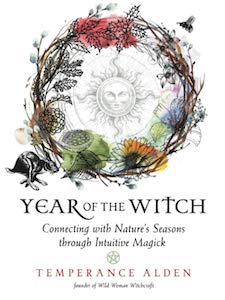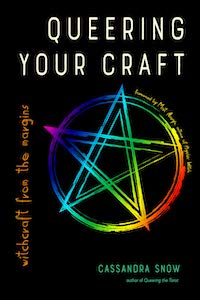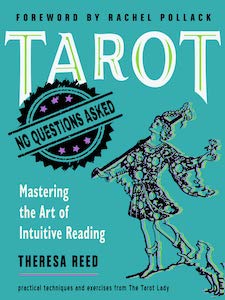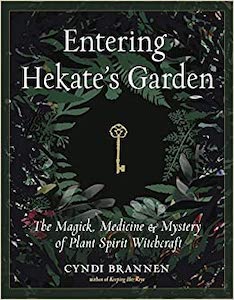
The Way of the Water Priestess: Entering the World of Water Magic, by Annwyn Avalon
Weiser Books, 1578637249, 238 pages, January 2021
The Way of the Water Priestess: Entering the World of Water Magic is a profound initiation. As you dive in, author Annwyn Avalon makes clear the distinction between being initiated into a lineage and going straight to the source of your own channel with spirit, your own intimacy with water. This is a sacred text that attunes you so deeply to what you are mostly made of.
Avalon is a water priestess and a water witch. She is the founder of Triskele Rose, an Avalonian witchcraft tradition. This book called to me because I wanted to deepen my relationship to water as an act of devotion.
“The work of a water priestess is expressed in various sacred practices like enchanting the waters, facilitating rituals, creating healing ceremonies, and preparing sacred baths.”1
Each of these rich chapters had me diving into portals of sovereignty and healing. Avalon does a fantastic job weaving together concrete practices, lineages and history, as well as myth and story. In my personal practice, this book was the first step in so much unfolding. I embraced her invitation to me, “While you cannot initiate yourself as a priestess, you can dedicate your life to the sacred waters.”2
For me, this began with building my own water altar. This first step has been potent in my work as a priestess. And when I say priestess, I mean being willing to show up and do the work in devotion to tend and clean the altar; to center your acts of service to the water.
The Way of the Water Priestess is created in such a way as to offer us that sacred journey of initiation, pulling on deities and archetypes, myths, as well as daily devotional practices. This book is beautifully written with a wealth and depth of knowledge. All geared towards you, discovering your own information. Avalon creates a framework for you to foster your own intimacy with the waters. These are concrete and specific tools to connect you to your path.
My daily devotional, as Avalon calls it, with the water has deepened. Avalon offers prayers to help guide you through every step of the journey. There’s such an incredible wealth of knowledge, rooted, most particularly like Celtic and Roman traditions. I have found myself turning to this book over and over as I’ve struggled with my human being life. “You will find that the lesson of the river is different from the lesson that floral water, a sacred bath, or a gem elixir might teach you.”3 I so appreciated being guided to discover my own sacred relationship with the river, allowing it to be my guide in surrender and flow.
I drink so much water every day. I’ve experimented with some of the ways that Avalon offers us to bless the water. “Sound is also a good way to create healing water… You can simply start with your voice and tone the water with vowel sounds.”4 You can find a beautiful water prayer on that same page. I love this practice as a way to begin my morning and set intention for my day. The more I’ve dedicated myself to this practice, the more I’ve found my words to honor and bless the water I put in my body. My stepdaughter’s favorite practice is to charge her water with the full moon.
Avalon’s way of being in deep ritual practice with water is an invitation to reclaim your sovereignty through devotion and service.
“As priestesses, it is vital that we honor the water and spirits we work with. But we must also become trusted conduits for their energies by living in sacred union with them and tending their temples–our own physical temples, the temple of our bodies, and the natural temples where the water flows. When in these states of sacred union, we become a vessel through which the spirit can speak.”5
This book serves such a depth and breadth of wisdom as to belong on every bookshelf, from novice to maven water carrier. It accessibly unpacks fundamentals like working on the holy days of Beltane, Samhain, and the like. It explores the art of ritual, water divination, and the path of the priestess. For those steeped in their own traditions and lineages, it offers context and spell work.
If you are looking for your activism in this world, I invite you to welcome your devotion and service to water as being a part of how we collectively transform the world. I feel so much more able to hear the message of the water for me in encountering these practices and tools, and the power that comes when approaching this work as a devotee. As a being in service to something so much greater than myself. Everything you need to start is in The Ways of the Water Priestess.

Allyson Seal is The Art + Sex Witch. Their pronouns are she & they. If they were a tarot spread, they would be The Three of Swords, The Empress, and The Star. If they were a planet, they would be Pluto. Allyson is a psychic medium, an artist, and a teacher. They believe that we can heal the wounds of our hearts and our spirits through our own attention. They also believe that it’s more fun if we do it together with creativity and sensuality. You can learn more about them at theartandsexwitch.com.






















